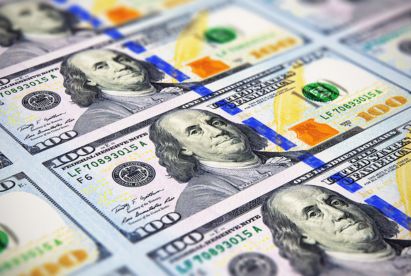US Dollar’s Purchasing Power
The US dollar has been the world’s dominant currency for decades. Given its importance as a global trade and reserve currency, understanding the purchasing power of the US dollar throughout history is essential. This post provides an overview of the purchasing power of the US dollar from 1913 to present.
Historical Overview of the US Dollar’s Purchasing Power
The purchasing power of a currency refers to the amount of goods or services that can be purchased for a unit of currency. Inflation is the primary factor that affects the purchasing power of the US dollar. Inflation refers to the rise in prices of goods and services over time. The US government tracks inflation through the Consumer Price Index (CPI), which measures changes in the price of a basket of goods and services consumed by households.
Over the years, the rate of inflation in the US has varied. For instance, from 1914 to 1918, the rate of inflation was about 10% per year, while from 1946 to 1953, it was about 5% per year. In the 1970s, inflation rates surged, averaging around 7.2% annually.
In 1913, $1 could buy you what $26 can buy today. The US dollar’s purchasing power has greatly diminished since then due to inflation.
Factors that Affect the Purchasing Power of the US Dollar
Various factors affect the purchasing power of the US dollar. One of the primary factors is government policies, including fiscal and monetary policies. Fiscal policies refer to the government’s spending and taxation, while monetary policies refer to the Federal Reserve’s monetary policy in regulating the money supply and interest rates.
Global economic trends also impact the purchasing power of the US dollar. For instance, during periods of global economic growth, demand for US dollars increases, improving its purchasing power. Conversely, during periods of economic recession, the US dollar’s purchasing power weakens.
National debt and deficit spending can also reduce the value of the US dollar. When the government spends more than it collects in taxes, it finances the spending by issuing more debt, which can impact the value of the US dollar.
Finally, interest rates, particularly the Federal Reserve’s target interest rate, also influence the purchasing power of the US dollar. The rise or fall of the interest rate tends to affect consumers’ borrowing and saving behaviors, which can influence the purchasing power of a currency.
Key Events Affecting the US Dollar’s Purchasing Power
Several significant events have significantly impacted the US dollar’s purchasing power. For instance, the Great Depression caused deflation in the US economy, reducing the purchasing power of the dollar. Similarly, World War II and post-war inflation further impacted the dollar’s purchasing power.
In 1971, President Nixon abolished the gold standard, which allowed the US dollar’s value to fluctuate according to supply and demand rather than tied to the value of gold. This resulted in significant fluctuations in the US dollar’s purchasing power.
Recent events such as the 2008 financial crisis and the COVID-19 pandemic have also impacted the purchasing power of the US dollar. The 2008 financial crisis resulted in significant government spending, which reduced the value of the US dollar, whereas the COVID-19 pandemic caused a decline in economic activity, resulting in deflation and impacting the US dollar’s purchasing power.
Potential Implications of Changes in the US Dollar’s Purchasing Power
Changes in the US dollar’s purchasing power can have significant implications for consumers and the economy. For instance, a weak US dollar increases the prices of imported goods, leading to inflation, which can cause the cost of living to rise. Additionally, a weak US dollar can negatively impact foreign investment inflows, which can affect the US economy’s growth and stability.
Changes in the US dollar’s purchasing power can also affect international trade and foreign exchange rates. For instance, if the US dollar’s purchasing power weakens, other countries may seek to diversify their portfolios, resulting in a decline in demand for US dollars. This can lead to a depreciation of the US dollar relative to other currencies.
Conclusion
The purchasing power of the US dollar has evolved significantly over the past century. Understanding the factors that impact the value of the US dollar can help you make informed decisions when it comes to your personal finances. Economic events such as inflation, global economic trends, national debt, and government policies all influence the purchasing power of the US dollar. While the value of the US dollar can fluctuate significantly over time, keeping an eye on inflation rates and other economic indicators can help you stay informed and make smart financial decisions.
